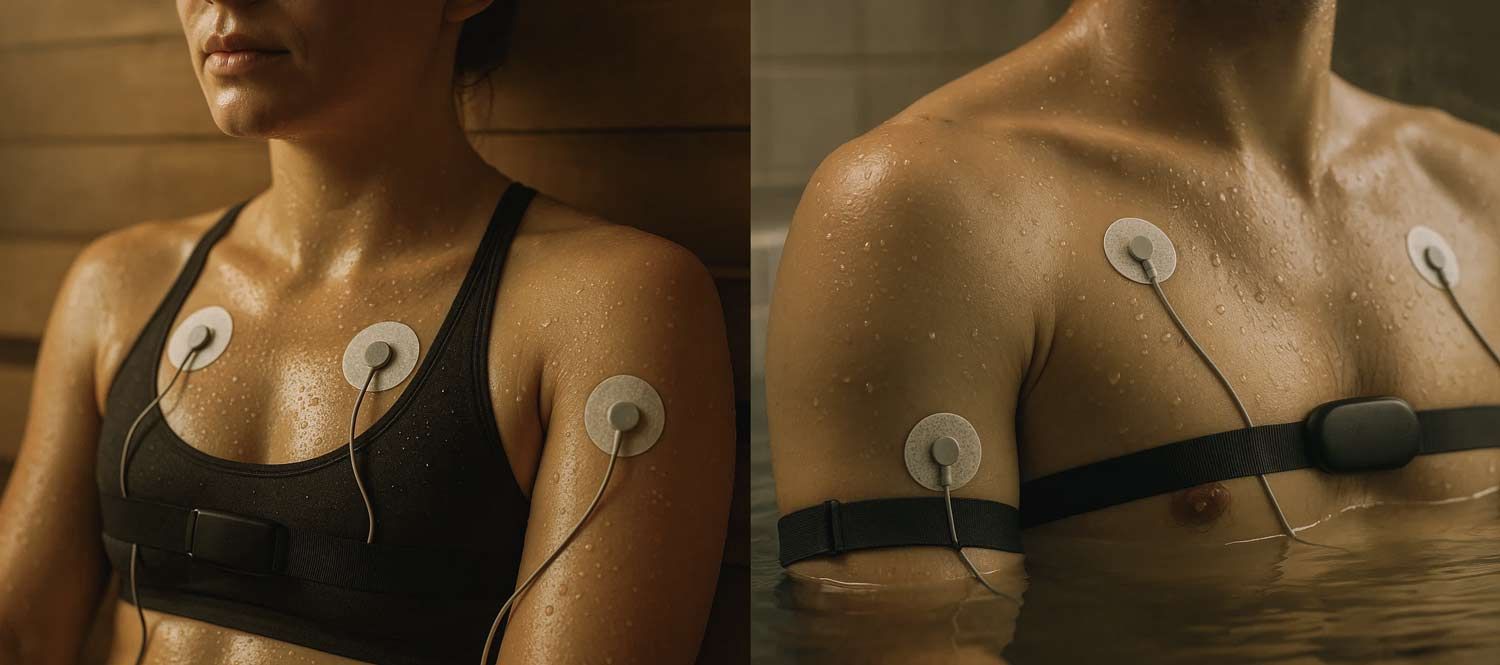Hot tubs vs saunas: what a new physiology study actually found

When it comes to relaxation and recovery, few rituals feel as timeless as a good soak or a sit in the sauna. Both promise warmth, calm, and that delicious post-heat looseness. But physiologically speaking - what’s really happening inside the body? And does one approach offer a stronger effect?
A 2025 study from the University of Oregon recently compared three forms of heat therapy: hot-water immersion, a traditional dry sauna, and a far-infrared sauna. The results have made waves in the wellness world - but before we dive in, it’s worth noting a few important points.
A quick word on what this study can (and can’t) tell us
This was a small, single-session trial with just 20 healthy, physically active adults aged 20-28. Everyone was fit, young, and generally in excellent health - so we can’t assume the same effects would appear in older adults or anyone managing medical conditions.
In other words, the researchers were testing under ideal human conditions - the kind of body that’s hydrated, well-rested, and capable of adapting quickly. Most of us, somewhere between well-intentioned and worn-out, with the odd niggle or restless night, are operating in far more realistic territory. That doesn’t make the findings less interesting, but it does remind us to read them as indicators, not guarantees.
Each participant completed one 45-minute hot-water soak at around 40 °C, one traditional sauna session (3 × 10 minutes at ~80 °C) and one 45-minute far-infrared sauna (45-65 °C). Researchers then measured body temperature, cardiovascular changes, and several immune markers for up to two days afterwards.
So this isn’t a sweeping verdict on heat therapy - just an interesting glimpse into how the body responds under controlled conditions.
What they found
- Hot tubs raised core temperature the most - roughly +1.1 °C, compared with about +0.4 °C in the traditional sauna and almost no change in the infrared session.
- Cardiac output - the volume of blood pumped per minute - increased most during the hot-water soak, showing a stronger cardiovascular response.
- Immune markers shifted only after the hot-water immersion: levels of IL-6 (a signalling molecule) rose shortly after, followed by higher counts of certain immune cells at 24-48 hours. The sauna sessions didn’t produce these same changes.
In other words, the hot tub delivered the biggest internal ‘heat load’ - which likely explains its more pronounced cardiovascular and immune response.
Interpreting it sensibly
It would be tempting to shout “hot tubs boost immunity!”, but that’s not what the researchers claimed. The immune signals were short-term, and the study wasn’t designed to test illness prevention. Still, these findings suggest that immersing the body in hot water might stimulate similar pathways to gentle exercise - at least temporarily.
Equally, this doesn’t mean saunas are somehow less valuable. Traditional and infrared saunas may deliver other benefits (such as relaxation, heat acclimation, or improved sleep) that this particular experiment didn’t measure.
Why the water matters
From a physiological standpoint, water transfers heat far more efficiently than air. That’s why soaking in a 40 °C tub raises core temperature faster than sitting in an 80 °C room - your body simply absorbs heat more directly. It’s the same reason a warm bath feels so enveloping compared to warm air.
A few practical pointers
- Start slowly - aim for 15-20 minutes at a comfortable temperature and build up.
- Stay hydrated before, during and after.
- Listen to your body - dizziness or nausea means it’s time to cool down.
- Check with your GP if you have heart conditions, high blood pressure, or are pregnant.
So, what’s the takeaway?
The study doesn’t hand us an absolute “winner”, but it does hint that hot-water immersion may deliver a stronger full-body heat stimulus than a sauna under comparable conditions. That makes it an intriguing option for anyone interested in the wellbeing effects of warmth - especially when comfort, relaxation, and social connection come as part of the package.
And for most of us, living in the real world rather than a physiology lab, that’s really the point. We don’t need perfect data or perfect bodies to appreciate the value of switching off, warming up, and letting the day ease out of our muscles. A hot tub just happens to make that process particularly enjoyable.
For us, that’s what a hot tub should really be about: a ritual that’s not only soothing but genuinely restorative - physically and emotionally.
Sources
- Primary study: Atencio JK, Reed EL, Needham KW, Lucernoni KM, Comrada LN, et al. Comparison of thermoregulatory, cardiovascular, and immune responses to different passive heat therapy modalities. American Journal of Physiology - Regulatory, Integrative and Comparative Physiology (2025). Read the paper.
- Secondary coverage: University of Oregon News press release summarising the study. Read the release.
- ScienceDaily article derived from the press release. Read the summary.
- EurekAlert newswire item carrying the same press material. Read the summary.



